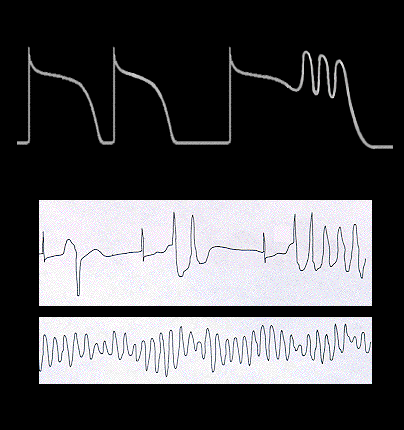
Early afterdepolarizations, the second postulated mechanism, are illustrated in the top of this figure. They are a form of what is referred to as “triggered activity”, a type of spontaneous impulse formation that occurs during the plateau of the action potential. It is caused by an inward current that has been attributed to the sodium/calcium exchange mechanism in calcium overloaded cells and/or to enhancement of the L-type calcium inward current. It is facilitated by the lengthening of plateau duration that accompanies inhibition of the outward potassium currents responsible for repolarization. Early afterdepolarizations and torsade de pointes frequently occur in the setting of bradycardia and are facilitated by a short-long alternation of preceding cycle lengths as is shown here. Clinically, the three most common causes of torsade de pointes are severe bradycardia, hypopotassemia and the class Ia and class III drugs.
